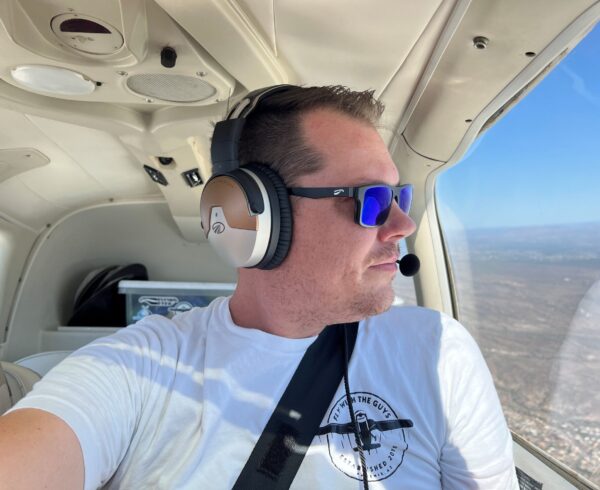An aviation headset is a basic part of a pilot’s personal gear. New pilots buying one for the first time are sometimes surprised that a good aviation headset typically costs more than headsets they’ve used before for gaming, for listening to music or other entertainment, or for communications such as phone or online meetings. We’re sometimes asked why aviation headsets cost so much more than headsets sold for other purposes. The simplest answer is: aviation headsets don’t cost significantly more if you look for comparable performance, quality, and features. It’s the combination of these features and the engineering to integrate them that determine headset prices, whether aviation or consumer. So, let’s delve into that.
The fact is that prices for top-rated gaming and entertainment headsets are comparable to premium aviation headsets or higher. The Audeze LCD-GX, which Tom’s Hardware applauded as “a Gaming Headset for Audiophiles,” lists at $899. Dyson Zone headphones (with air purification!?!) list at $999.99. A pair of Sennheiser HD 820 Audiophile headphones lists for $1,999.95, and limited-edition headphones with planar magnetic sound go for up to $5,000. In other words, the sky’s the limit.
Pilots and demanding consumers look for the same things in a headset, but with a different emphasis. What most distinguishes premium consumer headsets, as with aviation ones, is sound quality. After all, sound is why we wear a headset. But while an audiophile wants to experience every nuance of a performance or soundtrack, a pilot needs to hear every communication 100% accurately, and still be able to hear and detect nuances with their aircraft. Premium aviation headsets use high-performing Active Noise Reduction (ANR), a built-in computer that analyzes and precisely cancels sound coming from outside the ear cups, enabling the pilot to hear comms accurately while protecting their hearing and avoiding fatigue caused by noise in the cockpit. (Some mid-range consumer headsets also include ANR for more pleasurable listening, but it’s typically not combined with all the other features we’re going to talk about.)
Another important feature of all premium headsets is quality, both in comfort and durability. To be comfortable for hours of wearing, whether gaming, streaming entertainment, or in the cockpit, a headset needs to be lightweight and fit well. Serious and professional gamers often travel with their headsets and expect them to hold up to extended use. But pilots need their headsets to withstand even more extreme conditions, such as turbulence, back-country flying, or extreme temperature fluctuations. Lightspeed Aviation headsets are built out of durable yet lightweight materials such as stainless-steel headbands that fit the head without squeezing and magnesium cups designed to fit comfortably around the ear and provide a superior sound seal, materials that are also found in some top-end consumer headsets.
The final factor in headset price is the features. Here again, consumers and pilots have different needs. Premium features for consumer headphones range from Dyson’s built-in air purification system to pure, top-dollar cool factor, such as the Final Audio D8000 Pro Collector’s Edition with a gold-plated inner meshed plate and earpads made from Japanese washi paper. In contrast, pilots choose to pay for safety features. For example, the Lightspeed Delta Zulu headset features HearingEQity®, which optimizes communications for the wearer’s hearing acuity, and Kanari™ smart alert technology, which monitors and alerts the pilot to hazardous levels of carbon monoxide (CO), features which can literally save lives.
The bottom line is that every headset wearer has a budget, and each one has to decide what features are most important to them. Consumers can get a basic headset for a few dollars or a few hundred, but they may choose to pay more for a better sound experience, greater comfort, or additional features. Whether you’re talking consumer or aviation headsets, the integration of top-quality sound with premium comfort, durability, and special features takes precision engineering and adds to the price.
Pilots, too, have budgets. The FAA sets basic manufacturing and performance requirements for headsets, and lower-end aviation headsets cost a little more than low-end consumer ones because they have to meet those standards. That said, it’s possible to buy a simple aviation headset for a couple hundred dollars. But for pilots, a headset can be critical not only to their flying experience but to their safety and the safety of their passengers. So, experienced pilots typically buy the best, safest headset that they can afford.
Lightspeed Delta Zulu® is the next generation of aviation headset that offers groundbreaking new technologies including the built-in audio CO warning and HearingEQity® that can save the lives of both pilots and passengers.















Leave a Comment